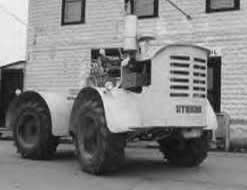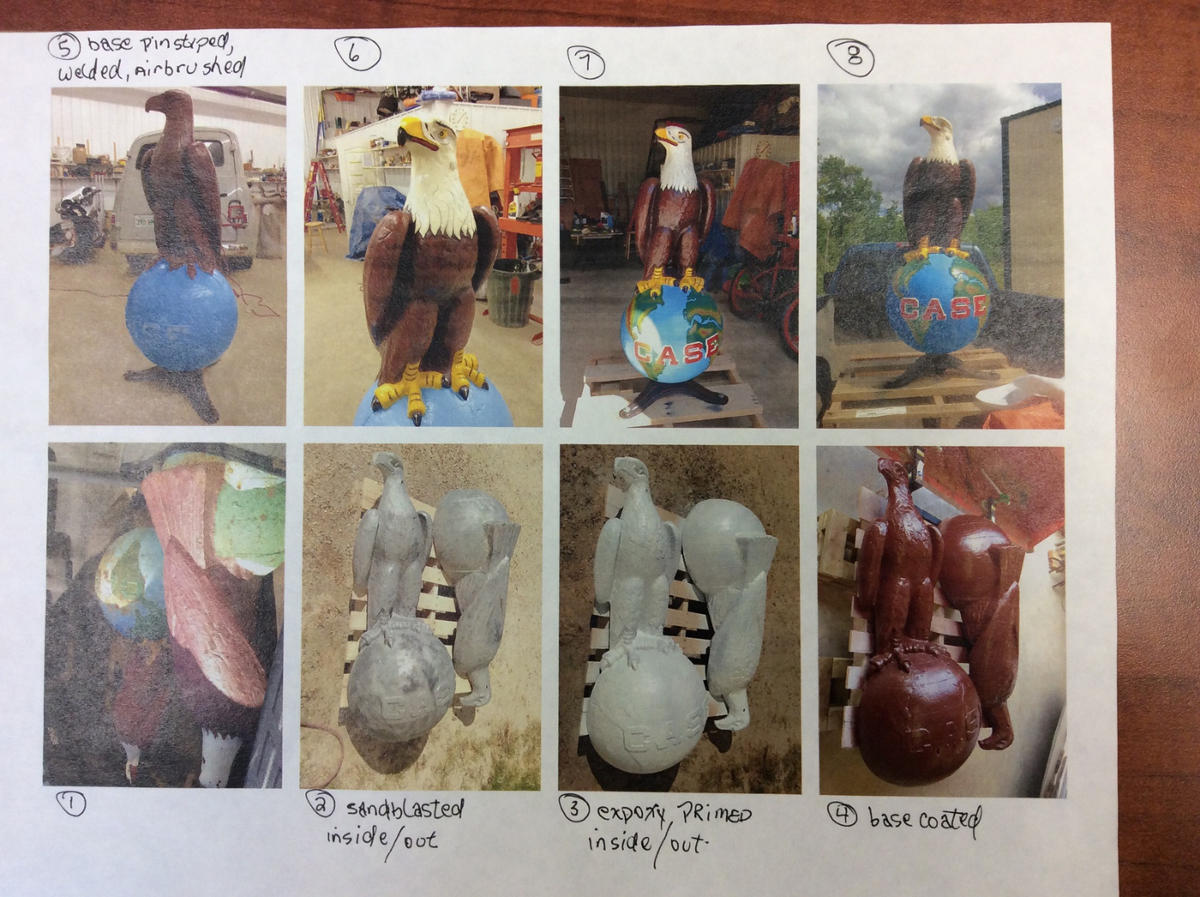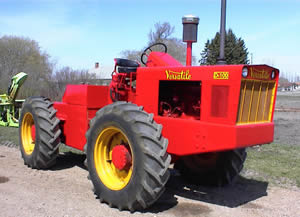Redhead Powersports Ltd. History
The Case Eagle Trade Mark 1894-1969
The Case Eagle, Old Abe, is a well-known industrial trade-mark throughout North America and the world over. King of the air, the eagle is an established symbol in North American life and heritage. The Case Eagle, Old Abe, is far more than merely a trademark. He is a character out of history, a bird with a personality and a story all his own. The story begins in the early spring of 1861. In the wild north woods of Wisconsin, along the historic Flambeau River, the Chippewas First Nations had just set out on their annual sugar making pilgrimage.
Atop a great pine along the trail was a nest of mud and sticks and in the nest, an eaglet. The Chippewas felled the tree and took the eaglet captive. The bird was still too young to fly. Chief Sky, leader of the Chippewas, carried the eaglet back to Jim Falls, Wisconsin as a pet. There, Thunder of Bees, son of the Chief, bartered the bird for a bushel of corn to a settler named Daniel McCann. Remarking on the incident many years later, a poetic commentator wrote: "And for this paltry sum was a noble bird sold from freedom to captivity; from barbarism to civilization; from the murmur of pines to crash of battle; from obscurity to fame."
The eagle was magnificent in appearance and displayed much spirit. The United States Civil War had started in 1861, and men were being recruited for service. Soldiers have a weakness for mascots, so McCann took his eagle directly to the nearest camp at Eau Claire, where Company C of the Eighth Wisconsin Regiment was being organized. The men of the Company admired the bird, McCann made a sale for 21 dollars, and the Eau Claire outfit had a mascot. They dubbed the eagle "Old Abe" after their President, Abraham Lincoln. Once he had joined Company C, "Old Abe" became a legend almost overnight. Gifted with remarkable intelligence, he became a soldier among soldiers, more than a mascot, but an inspiration to the men around him.
When Company C joined the Eighth Regiment at Madison, Old Abe became the mascot for the entire outfit. He was inducted into military service in a special ceremony, which included placing red, white and blue ribbons around his neck and a rosette of similar colours on his breast. He was carried on his perch in regimental parades and given a place of honour in the very center of the front ranks, alongside the flag. Throughout the civil war, Old Abe went through thirty-eight battles and skirmishes, and the Eighth Regiment became known as the Eagle Regiment. With his wild piercing cry, he was familiar to men on both sides of the fight and gained equal respect as one of the brave and courageous fighters.
Old Abe's remarkable loyalty was known to all and on occasions he broke his bonds and winged swiftly away and disappeared. After a short interval of freedom, the kingly bird, his wings spread to a magnificent six and a half feet, would swoop silently down to his perch beside the flag.
After the war, Old Abe appeared in many parades and reviews and received the cheers of the nation. He was placed in the Wisconsin State House to spend his mature years and he was visited by thousands annually. His last public appearance was in 1880 at a great reunion of veterans held in Milwaukee. He shared the platform with General Ulysses S. Grant. In the big parade Old Abe was a figure of magnificent dignity. When the band struck up a stirring march, he answered with his celebrated battle cry.
In 1881 a fire broke out in the basement of the State House. Almost suffocated by heat and smoke, Old Abe never recovered and the great eagle died on March 26 188I. Stuffed and mounted in a glass case, he continued to attract attention long after his death. In 1904 his remains were destroyed by another fire. Today there are two oil paintings to keep fresh the memory of the fighting eagle who had earned his place in the sun.
Mr. Jerome Increase Case first encountered the eagle in 1861 while on a business trip to Eau Claire where Company "C" was parading. Over the rumble of drums and the tramp of marching feet, the bird was screaming his battle cry. Mr. Case questioned a boy standing alongside: “Where did he come from, the eagle?” The boy told him Old Abe's story. Then and there Mr. Case determined to adopt Old Abe as the symbol of his business just as soon as the civil war was over.
In 1865 Old Abe began his career as the most famous bird in agricultural history as the trademark of the J. I. Case Company. For over 100 years the Case Eagle trademark identified Case machinery, parts, literature, and dealerships. Just as Old Abe came through the battles of a long, hard war to make a place for himself among the immortals, so has Case endured and survived battles of a different kind, and has emerged as one of the great leaders in the agricultural industry. Just as the image of the American eagle has come to represent prowess, freedom, and strength, the name Case is has come to represent strong, dependable, reliable, long-lasting machinery.
The roots of Redhead Powersports run deep in the Battlefords. Chisholm and Ferguson International goes back to 1940's as the International Harvester dealer in North Battleford.
In 1963 Ron Hamilton, Bruce Lotts and Lindsay Stoesz purchased Chisholm and Ferguson and changed the name to HLS Equipment. HLS operated out of the downtown North Battleford location until 1965, when they moved to the present location on 114th Street. In 1981 Ron Hamilton bought out his two partners and the name was changed to Hamilton International.
In 1985 the Tennico Corporation, the owners of Case, purchased the International Harvester Company and merged the two companies into CaseIH. This move brought the Case Equipment line over to Hamilton International.
In 1988 Bill Volk purchased Hamilton International and the name was changed to Redhead Powersports. In 2001 Redhead Powersports purchased North Battleford New Holland and the New Holland line was moved to the current location in the spring of 2002.
2008 brought another major change to Redhead Powersports, Leon Lowzochuk, Kevin Hadley and PFM Capital Inc. purchased Redhead Powersports from Bill Volk. This new group has some agressive plans for growth of the business and the future looks bright and promising as we move ahead.
This is the tractor that broke through the barriers in marketing four - wheel drive agriculture tractors. The model 100 (D100 diesel, and G100 gasoline) was Versitile's first Four - Wheel Drive tractor. Peter Pakosh and Roy Robinson, 'equal partners in the company begun by Pakosh in Toronto in 1974' had been producing an ever increasing line of innovative and competitively priced farm equipment. The new Versitile Four - Wheel Drive of 1966 delivered 100 HP to the drawbar and it was priced similarly to the large two - wheel drive tractors.
- Building on his father's work, Cyrus McCormick invented and patented the mechanical reaper in 1834
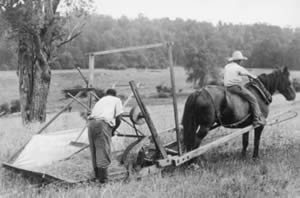
- 1940 - First Automatic self tying hay baler invented by Ed Nolt and manufactured by New Holland
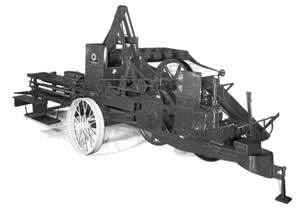
- First tractor built by Douglas and Maurice Steiger in Thief River Falls, Minnesota during the winter of 1957-58. This tractor weighed 15,000 lbs, was powered by a 238 hp V6 Detroit diesel and went on to work over 10,000 hrs in the field.
